“Retvisan” vs “Tsesarevich”, or Why not Kramp?

Interested history domestic fleet Caricature of C. Crump, drawn in a number of sources, where the American shipbuilder is presented as an assertive businessman who came for the sake of profit to St. Petersburg with grandiose plans, is well acquainted. Having learned about the participation in the upcoming international competition of “famous shipbuilding companies in Europe” and realizing his lack of competitiveness, an unprincipled American, in order to conclude contracts for the construction of an armadillo and a cruiser, bypassing the competition allegedly went to give bribes to the head of the General Directorate of Shipbuilding and Supplies (hereinafter GUKiS) Vice Admiral V P. Verkhovsky and the Chief of the Fleet and the Naval Department, Admiral-General Aleksei Aleksandrovich. But what if through the prism of that era to try to look at the circumstances associated with the order of the future "Retvisan" and "Varyag", unbiased look?
After the Sino-Japanese War of 1894-1895 and the "Triple Intervention" by Germany, Russia and France, which resulted in a humiliating refusal to annex the Liaodong Peninsula for the victorious country, Japan began to build up its military power in preparation for further confrontations. In December 1895, the Japanese parliament approved the "Postwar Program" to strengthen the navy, which provided for the commissioning by 1906 of 119 warships with a total displacement of about 146 tons, including four class I battleships, six class I armored cruisers , five class II cruisers, 495 fighters and 11 class I-III destroyers. Initially, the Program was supposed to spend 89 yen, taken from the contribution received from China, the total amount of which was 93 yen. The process of implementing the program outlined by the Japanese could not fail to attract the attention of outside observers. So, in July 978 in England, an international congress of the British "Society of Naval Designers and Marine Engineers" was held, where, among others, Charles H. Cramp and an assistant class inspector at the Technical School of the Naval Department, a junior shipbuilder P E. Chernigovsky. Old acquaintances, later at the Sir WG Armstrong Whitworth & Co Ltd shipyard, they jointly inspected warships under construction for foreign customers, including the battleships Yashima and Hatsuse, and the American-impressed armored cruiser Asama. The fact of the construction of these ships was known to the Russian naval agent in England, Captain 509,00st Rank K.I. Grigorovich, apparently, this circumstance was the reason for the visit to the world's largest shipyard of the engineer Chernigov.
At the end of 1897, when the battleships “Shikishima”, “Asahi” and “Hatsuse”, as well as the armored cruisers “Asama”, “Tokiwa”, “Adzuma” and “Yakumo” were on the slipway stage of construction, at the Special meeting of the highest ranks of the Marine Ministry, held under the chairmanship of Admiral-Grand Duke Alexei Alexandrovich, formulated the basic requirements for the project of a new battleship (as conceived, "increased" Poltava "). Displacement of not more than 12 tons, increased speed to 000 knots, the main armament of the ship was to be four 18 "and twelve 12" guns. A few weeks later, work began on the “Technical Design Program” of the battleship at the Marine Technical Committee (hereinafter referred to as MTK) or, in modern terms, a tactical and technical task, in the final version of which, along with the above elements, the cruising range of up to 6 miles in a ten-node course and twenty 5-mm and 000-mm guns.
On February 23, 1898, Emperor Nicholas II approved a new shipbuilding “Program for the needs of the Far East”, developed by the Sea Ministry, which envisaged the construction of five squadron battleships, 16 cruisers, two mine barriers and 36 destroyers. In addition to the financial estimate of the Ministry of the Sea for 1898, which amounted to 67 rubles, according to the registered highest decree of February 500, 000,00, the Special loan was additionally granted for the needs of the Program under § Special in the amount of 24 , 1898 rubles.
On the eve of the planned international competition on March 14, 1898, at a Special Meeting, it was "in principle decided" to use the Peresvet project as a prototype for new battleships with an increase in the caliber of the main artillery from 10 "to 12", replacing the three-shaft power plant with a two-shaft one and abandoning the wooden and copper plating of the underwater part of the hull. Competitive invitations were sent in advance to a number of foreign shipbuilding companies, to which two responded: the Italian “Gio. Ansaldo & C "and German" Schiff- und Maschinenbau-AG "Germania" ", objectively being outsiders of European shipbuilding at that time. Apparently, including for this reason, the competition was not held, since given the lack of experience in the design and construction of modern battleships, there was no point in it.
Long before the events described above, the Russian side initiated a long business correspondence with Ch. Kramp, conducted by Vice Admiral N. I. Kaznakov (the chief commander of the port of Kronstadt and at the same time the military governor of Kronstadt, who had been in office for more than six years, after which at the end of 1899 he was replaced by Vice Admiral N.O. Makarov) and other senior fleet officials, as a result of which in early spring of 1898 the head of the American shipyard received a message that the Naval Ministry of the Russian Empire “would be glad to to watch "his plans and proposals for the construction of" at least two first-class armadillos, two first-class guarded cruisers with the highest speed and thirty destroyers "in accordance with the new shipbuilding program, which was already finally approved by the Ministry and approved by Emperor Nikolai II a few weeks ago.
C. Crump arrived in St. Petersburg at the beginning of March 1898, where over the next few weeks bilateral discussions of the widest possible range of topics were held with the chief inspectors of shipbuilding, mechanical, artillery, mines and construction of the MTK, as a result of which a common agreement on all important issues and the “Program for the design” of the battleship was handed over to Kramp. The construction of a shipyard in Port Arthur was also discussed: T. Seligman, member of the board of the Belgian John Cockerill, shortly before Kramp left for Russia, informed the latter about the proposal made by the Russian side to build a shipyard in the Far East for his company, the amount the transaction was previously estimated at 30 francs (about 000 rubles). The American’s visit took place against the backdrop of increased business activity of agents and experts representing the interests of French and German shipyards in Russia, supported by embassies and banks of their countries, which had influence at the royal court, and here, C. Hramcock (Ethan Allen Hitchcock) provided all-round support and assistance. , US Ambassador Extraordinary and Plenipotentiary to Russia, vigorously defending the interests of American industry. Following the results of meetings with C. Kramp at the end of March, Admiral General Grand Duke Alexei Alexandrovich and Chief of the Main Naval Staff F.K. Avelan approved the construction of a squadron battleship and cruiser I rank in America, the construction contracts of which were signed in Philadelphia on April 000,00, 7 of the year. A few weeks later, A. Lagan (Antoine-Jean Amable Lagane), chief designer and director of the shipyard of Forges et chantiers de la Méditerranée, visited St. Petersburg once again, and already on May 5000, 000,00, Adjutant General I. M Together with the cover letter, Dikov received a preliminary design and preliminary specification of an armadillo drawn up by a French engineer in accordance with the requirements of the ministerial Design Program. Ignoring the “principle decision” of the Special Meeting, Lagan used the Jauréguiberry battleship with a turret of medium artillery as a prototype, which, in turn, did not raise objections from the MTK, which, two months ago, in pursuance of the “principle decision” of the Special Meeting rejected the proposal made by Kramp as a prototype, the tower battleship “Iowa” in favor of the tower-casemate “Relight”. Soon, the French project was approved by the ITC, after which on July 11, 1898, the head of the Main Directorate of Civil Aviation, Vice-Admiral V.P. Verkhovsky, signed a contract with Lagan for the construction of a squadron battleship, which officially became known as “Tsesarevich” on January 26, 1898.
In addition to two foreign companies, the Ministerial “Program” was received by the Baltic and Mechanical Works of the Maritime Department. The four project options presented later for consideration by the MTK, developed by the senior assistant to the shipbuilder V. Kh. Offenberg, the captain of the hull of ship engineers K. Ya. Averin, as well as the junior assistants to the shipbuilder M.V. Shebalin and N.N. Kuteynikov, were further the development of the battleship “Peresvet”, however, even before the signing of the contract with A. Lagan, they were immediately rejected by the Admiral General, who on a non-alternative basis appointed the French project as a prototype when developing the design for the program Amma "Armadillos No. 2-8" series of five armadillos (battleship No. 1 - "Victory").
What actually underlie the adoption of this decision is not known, formally “Original booking mainly in the underwater part of the housing”.
However, the unequal conditions in which two foreign shipyards were in, as well as the fundamental rejection of the idea of a domestic project for a promising battleship, make it possible to make an assumption about the political background of the order of the future “Tsesarevich” in France, a country that periodically lent the government of Russia amounts of hundreds of millions of gold rubles, and with which in 1892 Russia concluded a military convention and established close military-technical cooperation. In addition, there were rumors of corruption on the part of Deputy Admiral P. P. Tyrtov, Manager of the Maritime Ministry, and Grand Duke Aleksei Aleksandrovich, Chief of the Fleet and Maritime Department. Is it really so, will always remain a mystery, however, the patronizing and inexplicably condescending attitude of the Maritime Department to Lagan is a weighty indirect evidence in support of this assumption.
Lagan, unlike Crump, was spared the need for weeks of grueling discussions at the ITC. The project of the main caliber towers proposed by the American firm for the sake of maintaining the "uniformity of the material part" was rejected by the customer in favor of domestic installations, at the same time the French shipyard received the right to install towers on the "Tsesarevich" designed for battleships of the "Charlemagne" type, thus the Metal Plant was is deprived of a profitable order (502 rubles), and the fleet is deprived of the uniformity of material. The contractual deadline for the delivery of Retvizan was calculated from the moment the supervising commission arrived in America (which arrived in Philadelphia two months after the contract was signed), and the Cesarevich - from the date of the final approval of the MTK drawings (ten and a half months after the contract was signed). If William Cramp & Sons undertook to build the Retvizan in 000,00 months, then Forges et chantiers de la Méditerranée immediately announced a 30-month period, later reduced to 48 months. The explanation given by R.M.Melnikov is “The actual recognition that a purely tower armadillo in terms of labor intensity is no less than one and a half times superior to armadillos of a tower-casemate type”.
However, this hypothesis is refuted by the practice of the firm "William Cramp & Sons", which in forty-six months built the tower battleship "Iowa" and in forty-six and a half months the tower-casemate battleship "Maine".
At the same time, the contract value of the two armadillos was comparable (3 010 000,00 and 2 885 000,00 dollars, respectively). The threats of Krampu’s fine caused by the failure to meet the contract deadlines were removed only after the latter announced to Admiral General that there were already buyers at Retvisan, including Vickers, Sons and Maxim, Limited, which offered one million dollars more than the contract price of the ship. Lagan, who also disrupted the contract terms, was not threatened with fines. But the “Tsesarevich”, adopted with gross violations of contractual norms, unlike “Retvisan,” left for Port Arthur with an extensive list of deficiencies, which served as the basis for the delay in the last payment of 2 francs. When all the problems were finally fixed, it is not known, but the French specialists, who arrived in Port Arthur aboard the battleship, began to prepare for the elimination of the main one (the capriciousness of the ammunition supply system for main guns), in the middle of December 000, i.e., fifty-five months after the start of the countdown of the contract term for the completion of the Tsesarevich. Vice Admiral F.K. Avelan, manager of the Maritime Ministry, spoke about the payment of the last, delayed payment for the “Cesarevich”, and he spoke with the Minister of Finance Count V.N. Kokovtsev a year later, on December 000,00, 1903. Noteworthy is the higher, compared with the “Retvisan”, the cost of a ton of displacement “Tsesarevich”.
This contrast is all the more striking because the wages of workers at the two shipyards were different. The minimum daily wage at a French shipyard ranged from one to three francs, the maximum - from four to seven. At the same time, minters, ship carpenters, blacksmiths, etc. received $ 18 (93,29 francs) per week at the American shipyard, and coachmen and drillers received from $ 10 to 10,5 (from 51,82 to 54,42 francs) ) in Week. Lagan’s personnel policy was that the vast majority of his workers were Italian unemployed shipbuilders who came to work in France, accustomed to being content with the small, as a result, they often received less for their work than even their colleagues in Russia, where the workers of the New Admiralty, for example, those employed in the construction of the Oslyabya squadron battleship received an average of 1897 rubles (1,03 francs) per day in 4, while the maximum daily wage reached two rubles (8 francs).
It is interesting that to match the wage gap of American and French shipbuilders there was a daily allowance that the GUKiS paid observers for the construction of two battleships for the same period of time, in 1900, amounted to 244 days. Captain I rank I.K. Grigorovich received in France "travel allowances" for a total of 4 rubles, and captain I rank E. N. Shchensnovich in the USA - 748,82 rubles.
A commonplace in domestic sources was accusations against Kramp of giving a bribe for the sake of concluding a contract bypassing the "international competition" and subsequent extortion by the "sly cunning" of extra-contractual sums for replacing the varieties of deck and vertical armor "Retvizan", so we will consider these points in detail.
The correspondence with the American shipbuilder, initiated by the Maritime Ministry, did not imply the latter’s participation in the “international competition” that had not yet been conceived, for this it was enough to send an invitation in the future. The idea to organize a contest came up after contact with the American was initiated to build a number of warships in the United States for the Russian fleet.
As for the vertical armor, the official documents of the Congress and the US Navy at our disposal open a different picture, different from the usual and long-standing textbook reader for the domestic reader. As you know, at the end of the 525th century, American metallurgical companies repeatedly supplied armor to Russia at a lower price than for ships under construction in the US Navy. The Krupp armor for the Retvisan was no exception, the average price of which was several tens of dollars lower than the cost of the Harvey armor supplied to the battleships Kearsarge and Kentucky, for example. The latter carried guarized nickel armor, the price of which, depending on the manufacturer, as well as the configuration, thickness and weight of the plates, ranged from 638 to XNUMX dollars per ton. The appeal to domestic sources supplements the foregoing with the details that are not available in American sources.
S. A. Balakin:
However, the facts are such that, in fact, the amount named by Balakin was paid only for deck armor, not only the Retvizana, but also the Varyag. As almost half a century ago, the shipbuilding journal wrote the historian of shipbuilding and the navy R. M. Melnikov:
For the deck armor, the Varyag paid $ 85; on Retvisan, the similar surcharge amounted to $ 000, totaling $ 225. We will repeat, for replacing Harvey’s armor with Krupp’s armor, the Maritime Department did not have to pay extra to the Americans.
The low cost of building the Retvisan (compared to the Tsesarevich) amid higher than in France, the cost of American labor and American building materials cannot but give rise to reasonable doubts about the economic feasibility of the American giving bribes. On the contrary, these circumstances suggest that to date, the narrative that announced the conclusion of contracts with C. Crump as a result of the personal interest of the head of the State Institution of Civil Protection V.P. Verkhovsky and Admiral General Aleksei Aleksandrovich has exhausted its plausibility.
The limited information available in the sources available to us does not allow us to make a full comparison of “Tsesarevich” and “Revizan,” so we are forced to confine ourselves to only a few aspects. The design features of the battleships being compared are such that, in a real combat situation, the Tsesarevich, despite the presence of the original mine protection, was in a worse position than other torpedoed Port Arthur ships. The torpedo hit the stern of the Tsesarevich’s port side near the beginning of the stern tube, the epicenter of the explosion was about 2,74 meters below the waterline and fell against the premises of the ship’s arsenal. The explosion resulted in a hole with an area of 18,5 square meters, the total area of the deformed area - 46,45 square meters. The Tsesarevich received up to 2 tons of water, its maximum roll reached 000 degrees, at the same time, according to the calculations of the chief ship engineer of the port R. R. Svirsky and the French engineer Coudreau, an additional increase in the roll by enough was enough half a degree. Avoid catastrophe helped vigorous counter-flooding of nine compartments at once, carried out before the threshold of loss of stability.
As a result of a torpedo hitting the port side of the Retvizan in the area of the underwater torpedo tube and the adjacent torpedo cellar, a hole was formed with an area of about 15 square meters. The epicenter of the explosion was about 2,5 meters below the waterline, the total area of the area deformed by the explosion was about 37 square meters. Three compartments with a total capacity of 2 tons were filled with water (according to other sources, 200 tons); by the time the ship began to straighten as a result of counter-flooding of the right cellars, the roll reached 2 degrees (the Retvizan artillery ports entered the water at 500 degrees).
The weight of the Tsesarevich’s reservation is 3347,8 tons, while the Retvisan’s similar indicator was 3300 tons. With belt armor (490 square meters and 346 square meters, respectively), the “Tsesarevich” had a much larger freeboard area than “Retvisan”. But at the Retvisan, the casemates of 6 "guns on the outside were protected by armored plates with a total area of about 128 square meters; in addition, the armadillo's board at the ends on an area of about 170 square meters was covered with 51 mm thick armored plates. The reservation area of the middle towers is caliber "Tsesarevich", depending on the angle of rotation, ranged from 33 square meters to 27 square meters. Thus, the total reservation area of the two armadillos, excluding the turrets of the main caliber, markedly differed from each other, while flashing 517-523 square meters at Tsesarevich’s and 644 square meters at Retvisan on board. Which of the two systems is better, it’s impossible to say unequivocally, since both have their advantages and disadvantages. But in the context of the Russo-Japanese War, taking into account the rate Japanese mostly on HE shells that exploded at the slightest delay, the distribution of armor on the Retvisan looks more preferable.
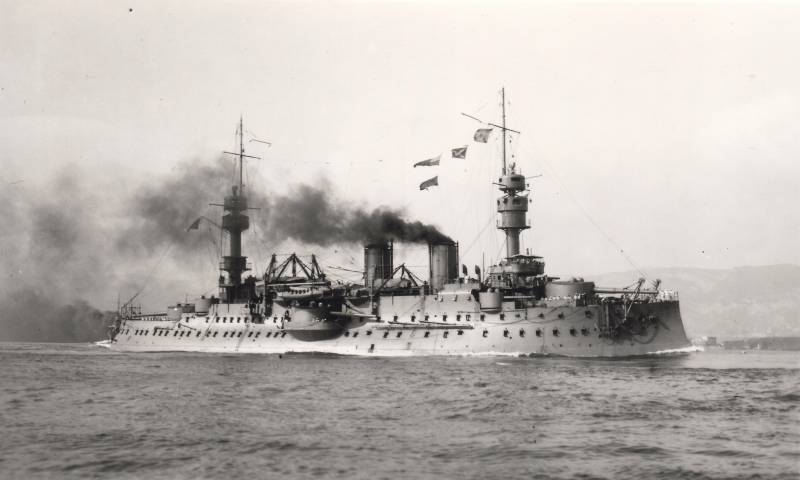
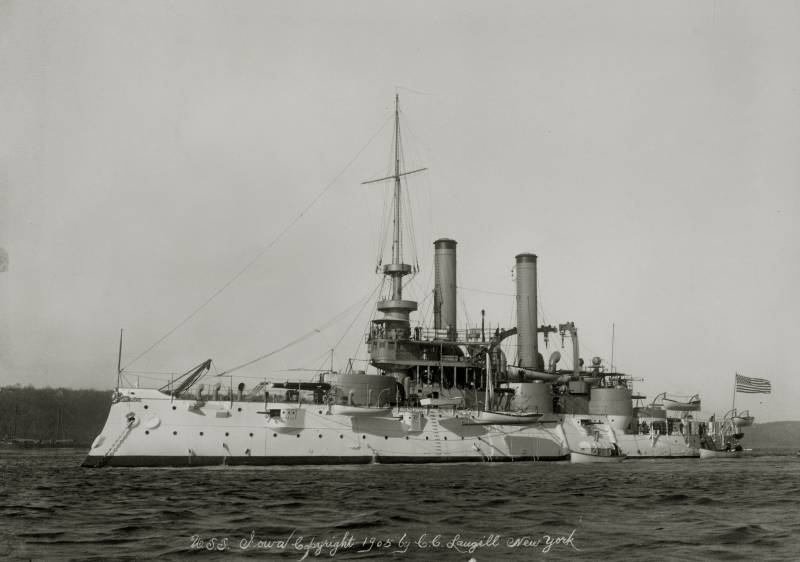
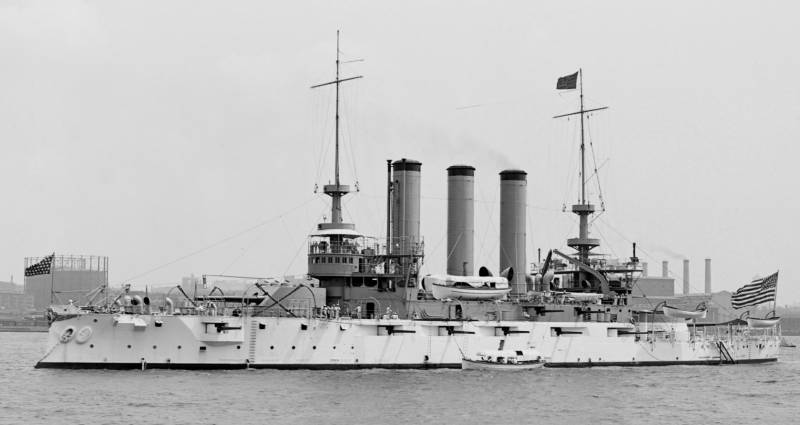
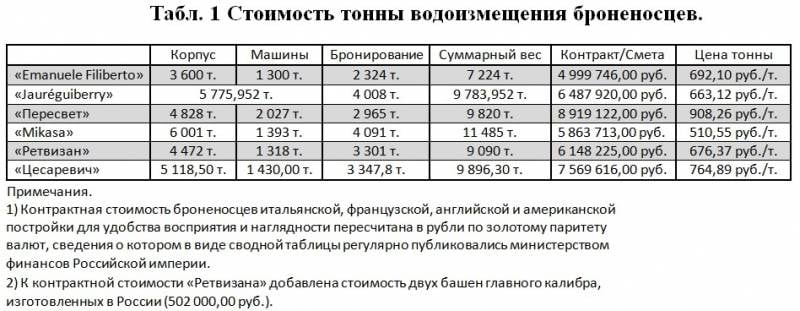
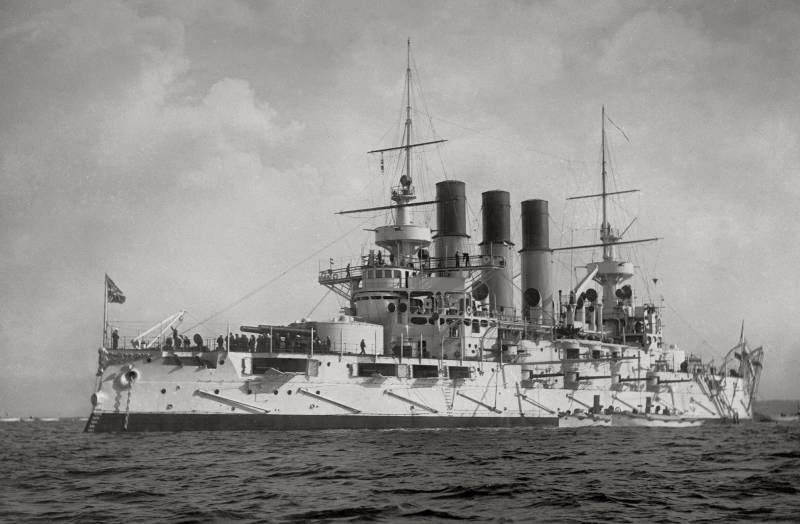
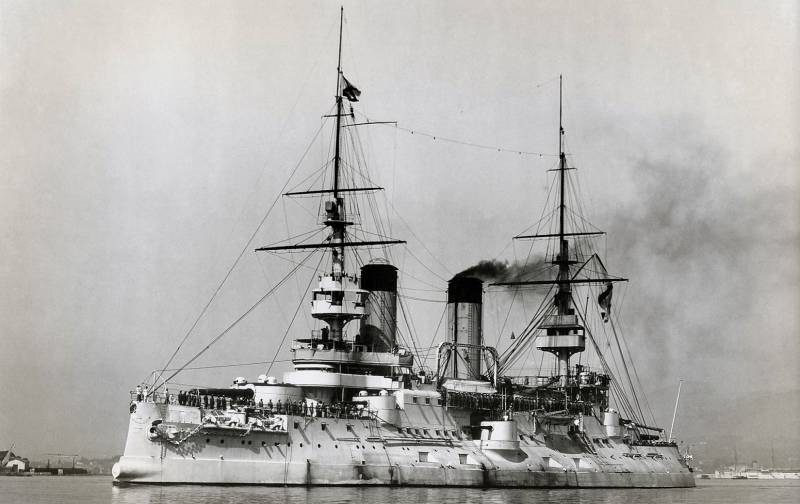
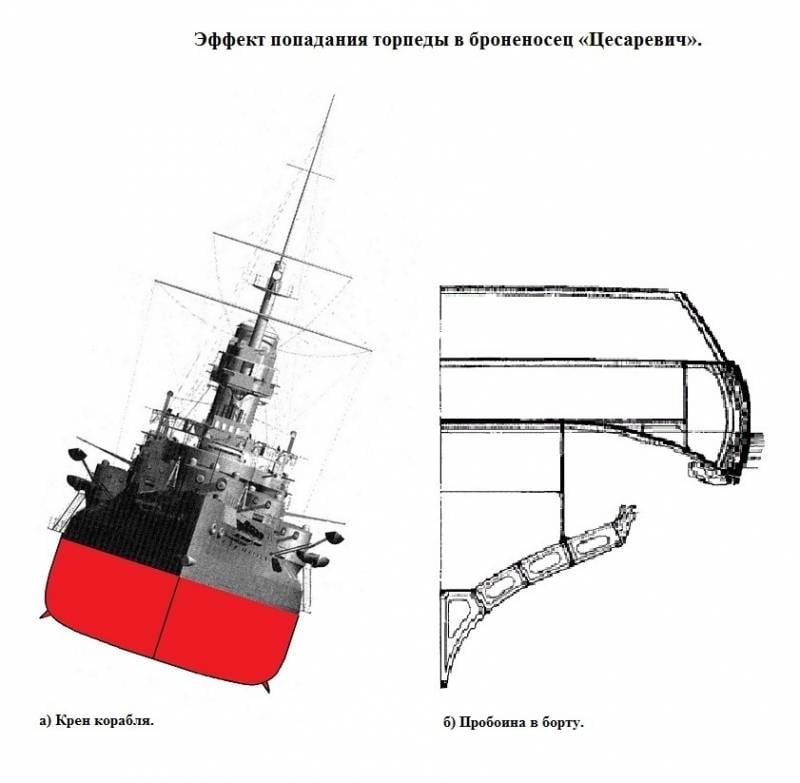
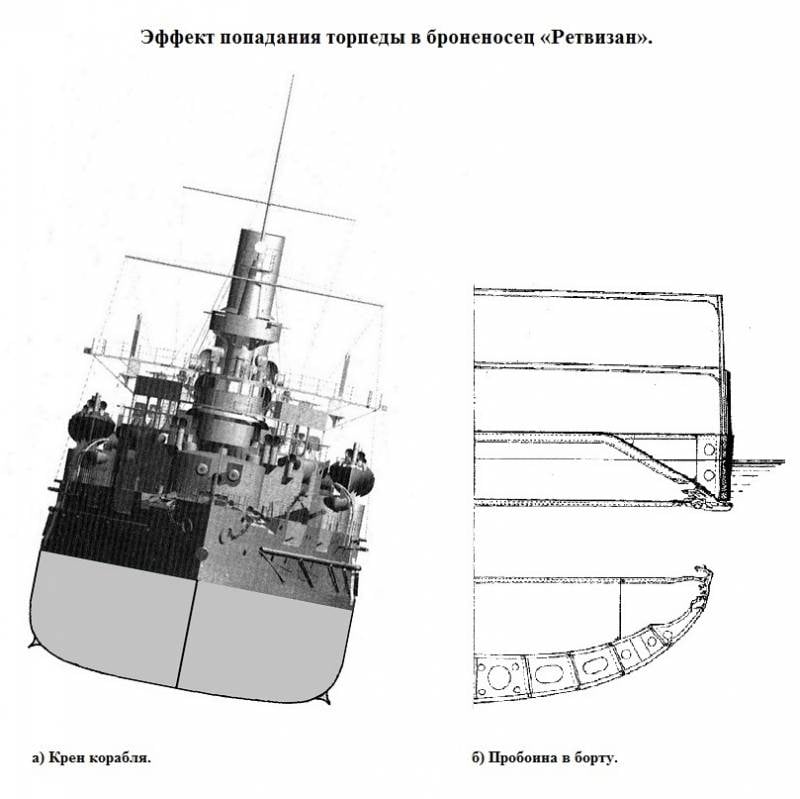
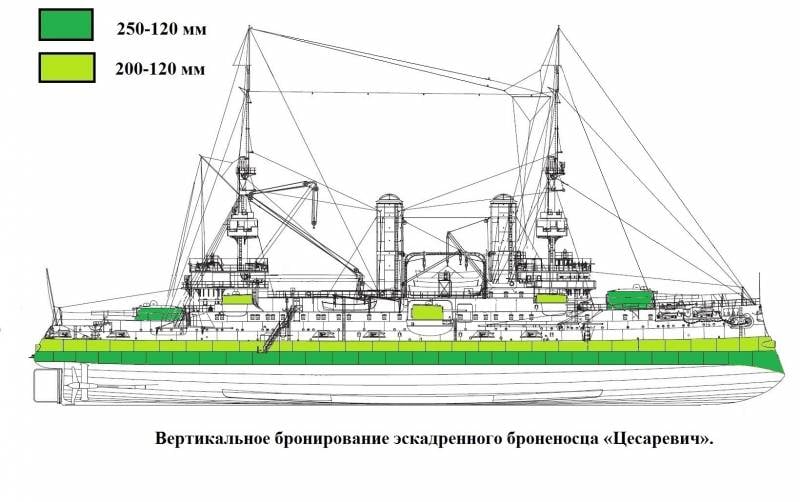
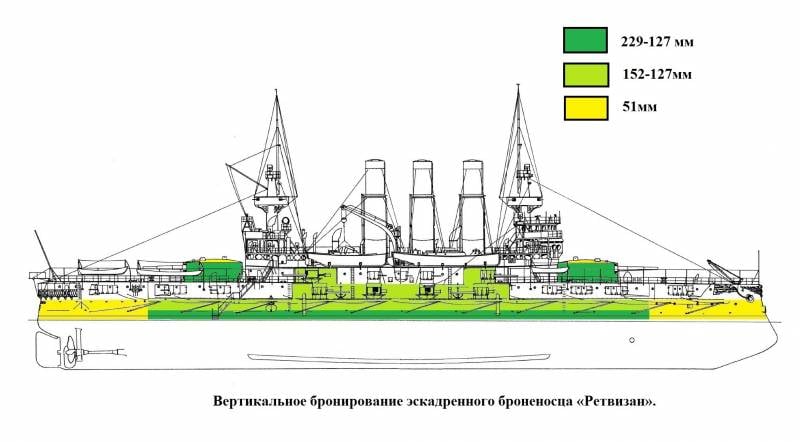
Information